My Favorite Safest Stripper Application
Note: My only connection to Safest Stripper is that its manufacturer is a Minnesota-based company, and I have a brother and many friends living in Minnesota.
One of the most vexing headaches when treating a piece of furniture is that gob of white or yellow glue that has been slathered on to or in to bad repairs. Yes, paste paint strippers work on getting it softened and removed, but will also likely remove any adjacent coatings materials.
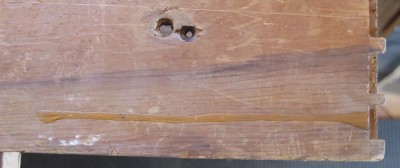
But what about those instances where the glue runs down the nearby vertical surfaces? Sure tehy can be chipped off, but in most of my work the objective is to leave the object as undisturbed as possible when enacting the repair. This is an example that is painfully typical. A repair of some damaged dovetails in this drawer resulted in a line of yellow glue crustifying on the unfinished inside surface of the drawer. Chipping this off with a knife or chisel will almost certainly result is some damage to the underlying substrate.
The approach I have found to be most satisfying is this one.

Placing the affected surface horizontally I brush a thin bead of Safest Stripper on only the glue reside.
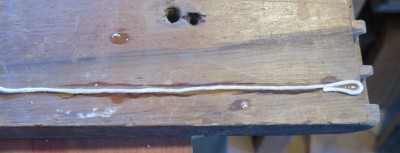
Then I lay on this line a piece of unsized cotton string and repeat the brushing of the Safest STripper until the string is saturated, serving as a reservoir for the solution to do its work.

I then cover the area with a piece of aluminum foil and walk away for a day at least, sometimes much longer. When I check on the progress of the process and think the time is right, I take off the aluminum foil and get to work. I lift up and remove the string (sometimes the softened glue is imbibed into the string and it comes up with it, but that is not a common happiness) and with either my fingernail or a piano key I begin to lift one end of the glue drip.
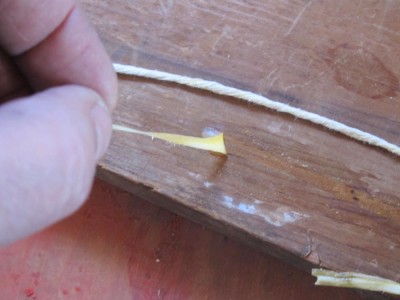
With care and a bit of patience the entire line of the drip peels off leaving the underlying surface completely untouched.

Since DBEs are water soluble and very low volatility I generally poultice the area at least twice to wick out any residue that might have infused the surrounding area.

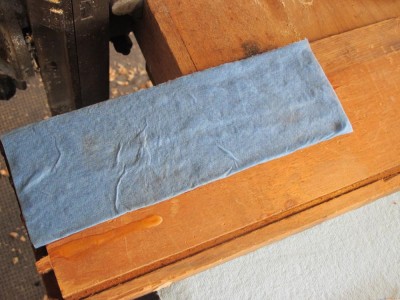
Almost any clean poulticing material is fine. I generally use either cosmetics pads or blue shop paper towels.
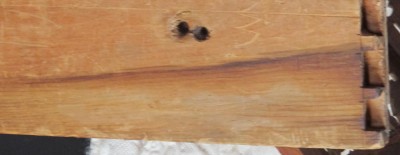
Once I am satisfied that the clean-up is complete, I am done. I’ve still got a tiny bit to do here, but you get the idea.


Join the Conversation!